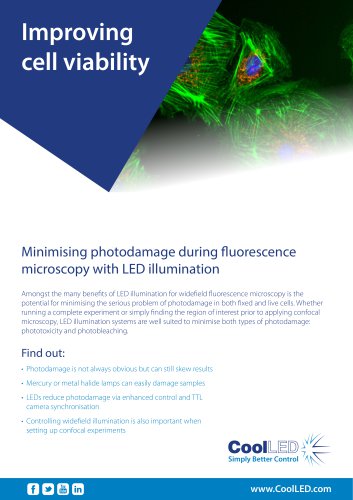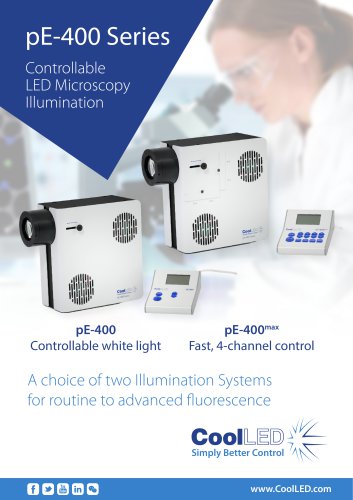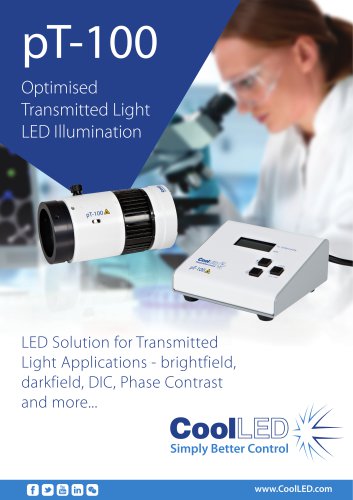
Catalog excerpts
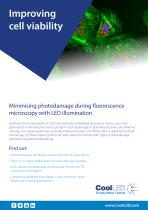
Improving cell viability Minimising photodamage during fluorescence microscopy with LED illumination Amongst the many benefits of LED illumination for widefield fluorescence microscopy is the potential for minimising the serious problem of photodamage in both fixed and live cells. Whether running a complete experiment or simply finding the region of interest prior to applying confocal microscopy, LED illumination systems are well suited to minimise both types of photodamage: phototoxicity and photobleaching. Find out: • Photodamage is not always obvious but can still skew results • Mercury or metal halide lamps can easily damage samples • LEDs reduce photodamage via enhanced control and TTL camera synchronisation • Controlling widefield illumination is also important when setting up confocal experiments Simply Better Control
Open the catalog to page 1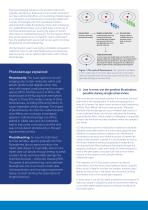
Exposing biological samples to the excitation light levels typically used during a fluorescence microscopy experiment can have a detrimental effect, and countering photodamage is a crucial aspect of any fluorescence microscopy experiment.1 A variety of strategies exist, from specialised media to selecting bright, stable fluorophores.2 Even when employing non-widefield techniques such as light sheet microscopy to minimise sample exposure, locating the region of interest often relies on widefield fluorescence. For the majority of light microscope experiments, it is therefore vital to...
Open the catalog to page 2
@LaissuePhilippe Hey #microscopytwitter, many thanks for all your answers re #happycells! Here's our last poll (for now) on #phototoxicity in #microscopy: If your live experiment seems to be affected by phototoxicity, what do you do? I=intensity (of excitation light), t=exposure time (of camera) Reduce I, increase t 65.2% Use better 'scope / label 25.9% 112 votes • Final results 12:20 PM Oct 15, 2020 © C? 5 Q 10 <9 Copy link to Tweet One proposed explanation is that by exposing the sample to a lower number of photons at any one time point, the cell's detoxification systems can cope with...
Open the catalog to page 3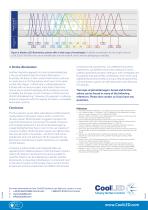
Figure 4: Modern LED illumination systems offer a wide range of wavelengths. Available wavelengths for the single-channel CoolLED pE-100 allow the use of wavelengths into the near-IR, which are less damaging to samples. Another interesting approach to reducing photobleaching is the use of strobe instead of constant illumination.2, 12, 13 Essentially, the theory is that constant illumination continues to create atoms in the fluorophore which exist in the triplet excited state (Figure 1). When light is instead delivered as a strobe with microsecond gaps, these triplet states have time to...
Open the catalog to page 4All CoolLED catalogs and technical brochures
-
pE-400 Series
4 Pages
-
pT-100
2 Pages

